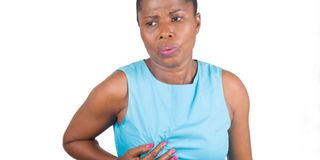Breast complaints? Clear any doubts of cancer

The single most important determinant of outcomes in cancer management is the stage at presentation.
What you need to know:
- Signs and symptoms of breast cancer include a breast lump, nodularity, nipple discharge, nipple crusting or other changes
- Changes in the shape or size of the breast or skin dimpling and ulceration can occur
- Even if you do not have any symptoms, but you are 40 years old and above, be safer than sorry
It was Tuesday morning and a 70-year-old woman queued with the rest outside my clinic. She had covered nearly 300km from her village.
She had a breast problem. Her breast bore an ugly ulcer. “Of course, it is cancer,” I thought to myself. I wrote down the series of investigations she needed - a needle core biopsy, a mammogram and staging CT scans before the next course of action.
I am happy she came to see a doctor. I would have been happier had she come six months earlier.
The single most important determinant of outcomes in cancer management is the stage at presentation. When detected early, localised breast cancer has a five-year survival rate of 100 per cent. Meaning in five years the chances of this woman being alive would be similar to those without breast cancer. On the contrary, when it presents late with regional or distant spread, survival periods are as low as 18 – 24 months.
Changes in nipple
The presenting signs and symptoms of breast cancer include a breast lump, nodularity, nipple discharge, nipple crusting or other changes in the nipple and its surrounding pigmented skin. Changes in the shape or size of the breast or skin dimpling and ulceration can occur, as in the case described.
As we mark another breast awareness month, our plea is for every Kenyan woman who has a breast complaint to get checked by a healthcare worker. Even if you do not have any symptoms, but you are 40 years old and above, be safer than sorry. Get screened this October.


